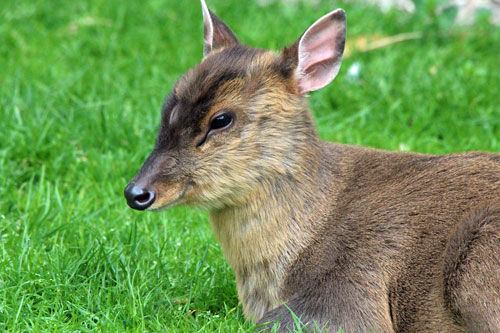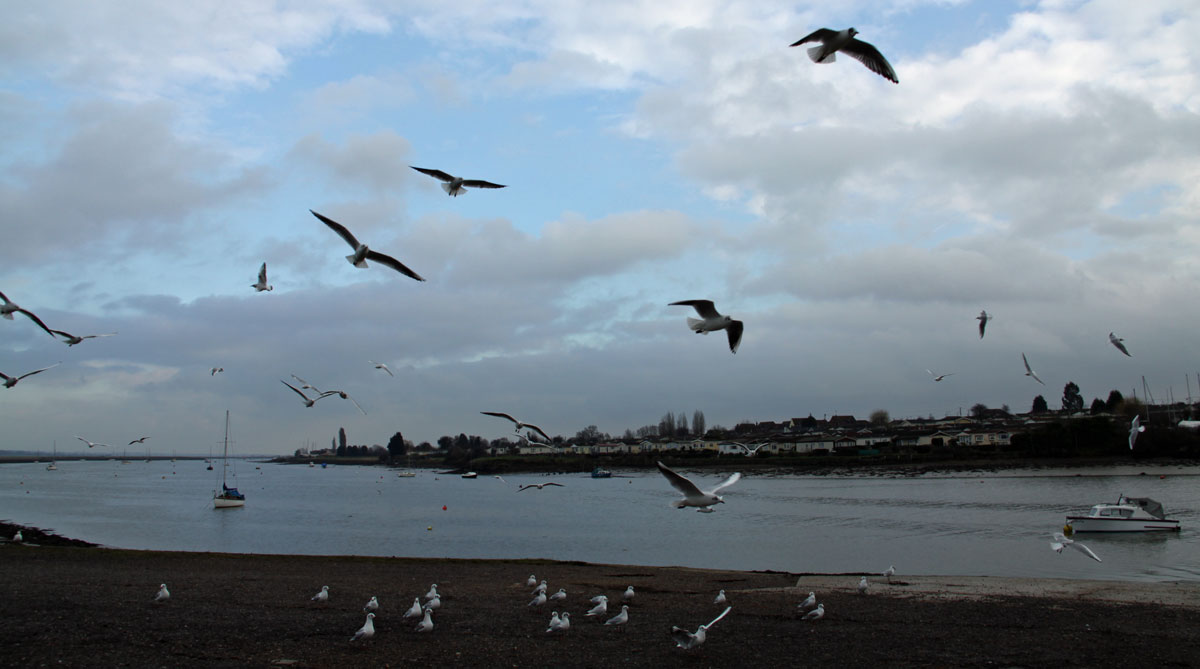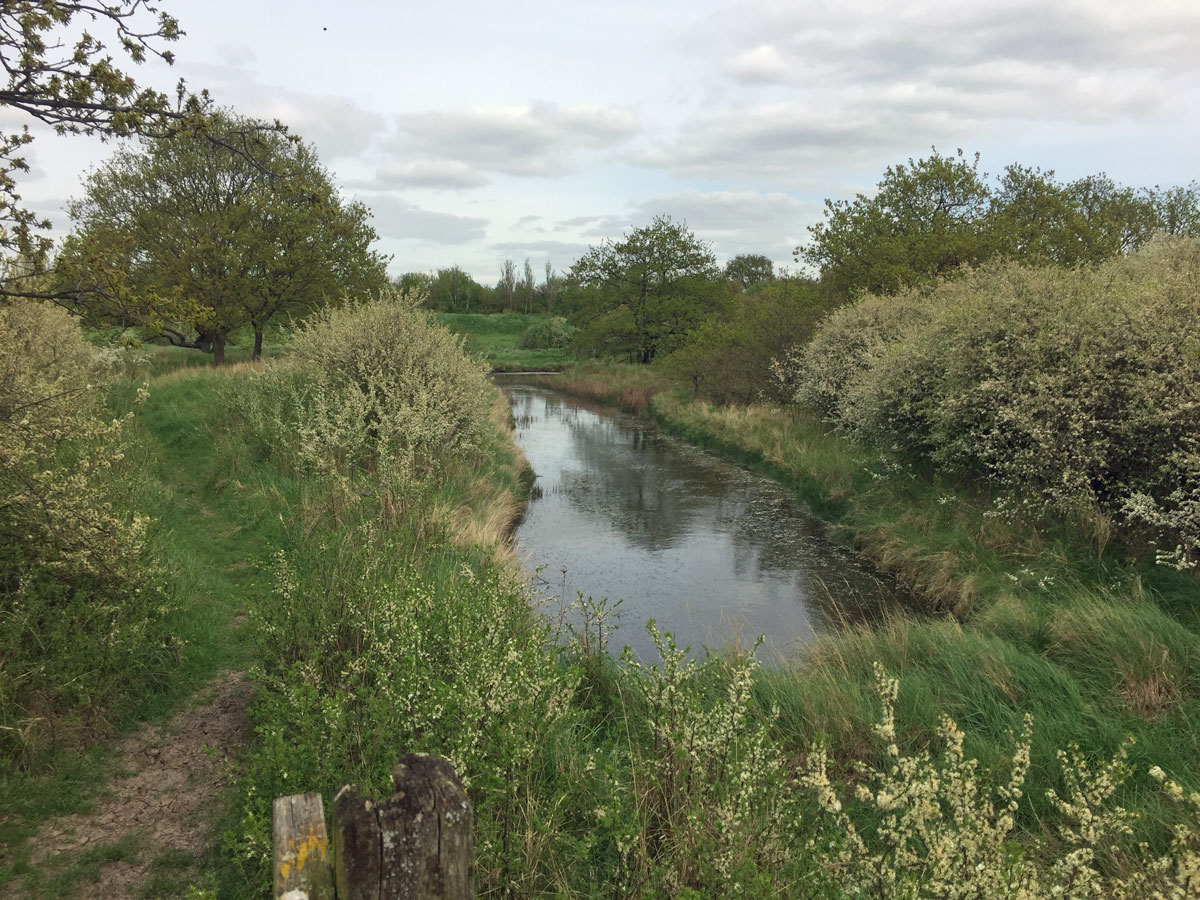Wildlife in South Woodham Ferrers
The most common mammals in and around the town are rabbits, foxes, hedgehogs, mice, rats and bats. People occasionally worry that bats will settle in their loft and they probably do in some. They’re usually spotted flitting like lightning after dusk.
Certain species of animals can become a nuisance when they enter people's homes and gardens. Read more about pest infestations in South Woodham Ferrers.
Woodham Bunnies
The best place to show children ‘bunnies’ is at the Lodge Pub. The pub and restaurant stands on the outskirts of South Woodham in a rural location accessed from Burnham Road from the front and Woodham Road at the rear. The rabbits can be spotted on the grass verges of Burnham Road but it’s best to go to the Lodge because you can park and take a walk to see the rabbits in the in the fields along the approach road.

 Spiky friends
Spiky friends
Live hedgehogs are a welcome sight in gardens, so many sadly end up squashed on the road. People fond of hedgehogs feed them cat food and make tunnels in between gardens to allow them to forage. Some of the best gardens for spotting hedgehogs are the longest ones that are found in King Edward's Road or Elm Road, or those that back onto fields.
Visiting foxes
The foxes come right into town and are regularly spotted in search of an easy meal. Life has become more difficult for them now that rubbish is contained in closed wheelie bins and many more houses are built on surrounding fields. Residents occasionally find the small food waste bins turned over with rubbish strewn over the pavement.
Read more about the foxes of South Woodham Ferrers.
Muntjac Deer
 This species of small sturdy deer is found in Essex and throughout south east England. The sound they make sounds similar to a dog barking. Shy and timid, they can be spotted in woodlands and long grass. Often, only a glimpse of the white of the underneath of the tail is spotted as the deer leaps into the undergrowth for cover.
This species of small sturdy deer is found in Essex and throughout south east England. The sound they make sounds similar to a dog barking. Shy and timid, they can be spotted in woodlands and long grass. Often, only a glimpse of the white of the underneath of the tail is spotted as the deer leaps into the undergrowth for cover.
Muntjac deer have been spotted in the woodland at the top of Bushey Hill (known locally as Radar Hill).
Rats get bad press
Most gardens have resident mice and occasionally rats. The mice population is swelled in the autumn by field mice when the harvest is gathered. That is the time to start closing outside doors so that they do not get into the house. Few people notice that they have mice in their gardens, it is only when a visiting cat leaves a present on the doorstep that they become aware.
Rats give more reason for concern because people associate them with disease. At least one person in South Woodham contracted Weil’s disease, or leptospirosis, which can be caught from water contaminated by rat droppings. Ponds are fairly popular in the town and the water could easily be contaminated by rat faeces. The use of decking in gardens has created a warm protected environment for mice, rats and other beasties to hide.
People who feed birds during the winter tend to encourage visiting rats, especially if the food is thrown on the ground. Rats prefer seed and birds are messy eaters, throwing it around even when in a high bird feeder.
Riverside voles
You would be very lucky to see a vole. These shy creatures make their homes along the banks of rivers, including the River Crouch.
Riverside animals
Rivers are home to many different types of animals. In addition to voles, there are newts that are occasionally spotted scurrying across the footpath along the Crouch. A resident flock of swans has made its home on the Crouch. People feed them, especially in the summer when they are more inclined to go for a walk in good weather. The gulls put up a good fight for the food. Kids love to watch gulls skillfully catch bread in mid-air.

Scary reptiles
Adders, grass snakes and slow worms all make their homes in the fens and fields around the town. Few people actually have any serious encounters, it’s usually dogs that get bitten as they rush headlong into long grass.
People report finding grass snakes swimming in their garden ponds.
Annoying birds
Anyone who owns a pond in South Woodham will know to keep it covered with a protective mesh because Mr Heron loves to help himself to a koi carp for breakfast.
Wild birds
Sparrowhawks and other birds of prey can be spotted soaring above roads and fields. The will sometimes drop into gardens to eat their prey. Unpopular magpies are also about, as are jays. It is interesting to note that people often admire the prowess of a bird of prey in catching their food and yet condemn magpies and jays for exactly the same thing. Short eared owls and buzzards can be spotted along the route of the river Crouch. Herons are frequently seen beside the ponds and lakes and also on roof tops and in gardens.
Garden Birds in South Woodham Ferrers
In South Woodham Ferrers, as elsewhere in England, sparrows are in decline. Some people blame the loss of habitat, of lawns and hedges being replaced with additional parking for the two or three cars that modern families want.
Blackbirds and robins are fairly common garden birds. Ring necked doves are a big success story and will visit bird feeders together with their plumper wood pigeon cousins. Fieldfares, members of the thrush family, tend to visit during early spring. They are larger than blackbirds and compete and win in gardens when food is scarce. Smaller thrushes are fairly rare; they are generally driven out by aggressive blackbirds.
Cats are a bird’s worst enemy in South Woodham and there are quite a few about. If you do come across an injured bird that a cat has caught, it is important to get it to the Essex Wildlife Hospital quickly, so that antibiotics can be administered, because cat's claws cause infections that kill birds.
Various other birds are in the area and will visit gardens if the right kind of food is put out for them. Finches love sunflower hearts and add a splash of colour to the garden, Gold finches and green finches are present.
Migrating birds
The fieldfare is a winter visitor and appears in October to leave by May. Canada geese also land in the marshy ground near the River Crouch to graze and overwinter.
Swallows used to visit Essex in great numbers to breed in the summer but no longer.
Insects
There is a great concern about the huge fall in bee populations. Blame tends to fall on insecticides and pesticides that are used by farmers although householders also tend to spray everything to death and people get into a panic if they see a bee. We need bees to pollinate trees and shrubs and it would be beneficial if people adopted natural methods of dealing with pest attacks. Lavender is a mosquito deterrent and ladybirds eat aphids.
Bees would rather not sting anyone because they die after stinging. Wasps, on the other hand can merrily sting away and survive. We have both in South Woodham and quite a few bumble bees that make burrows in the ground. The bumble bees, although large, are quite friendly. There are lots of bumblebees up on Bushey Hill, also small brown ground nesting bees that create humps of soil.

 Dragonflies around the ponds on the nature reserve
Dragonflies around the ponds on the nature reserve
The shiny metallic-looking bodies of dragonflies can be spotted near water on the fens and hovering over the ponds on the nature reserve. Read about the daily life of a dragonfly and what they eat.
Ladybirds
